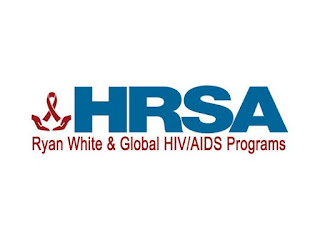By: Marcus J. Hopkins, Policy Consultant & Guest Contributor
The Division of Policy and Data in the HIV/AIDS Bureau (HAB) at the Health Resources Services Administration (HRSA) has released its second annual Ryan White HIV/AIDS Program AIDS Drug Assistance Program (ADAP) Annual Client-Level Data Report (HRSA, 2020). This report covers client-level data about the ADAP program for calendar years 2014-2018, including client demographics, socioeconomic factors (e.g. – income, healthcare coverage), and service utilization among clients enrolled in ADAP.
The 2018 report found the following:
- ADAPs served 285,000 People Living with HIV (PLHIV) in 2018;
- The majority of ADAP clients are male, and nearly three-quarters are from racial or ethnic minorities;
- White clients tend to be older than minority clients;
- More than half of female ADAP clients are Black;
- More than one-third of all ADAP clients have no health care coverage;
- Clients living at or below 100% of the Federal Poverty Level (FPL) are more likely to be minorities, female, and/or transgender; and
- The percentage of clients receiving only full-pay medication assistance has decreased, while the number of clients receiving other services, or a combination of services, has increased.
In looking at this report, one of the things that is confusing, not about the report, but in the way that HHS has classified Geographic Regions does not comport with U.S. Census Regions. This problem is not, however, unique to HHS – federal agencies have no single, standardized way of accounting for several measures – geographic regions, whether or not an area is rural, how populations are measured – each agency has its own ideas about who is whom and where they live. This means that regional reporting across federal agencies will differ from agency to agency, making it difficult to try to run initiatives that operate across state and local agencies, as funding and analysis doesn’t always align.
Those issues aside, the number of clients served increased by around 17,000 from 2017 to 2018, which is likely because more people are aware of and accessing services. I say this, because the total number of new HIV diagnoses has been steadily declining for several years. This can be seen as a partial success – a failure that people continue to contract HIV, but a success in that more people are being linked to care.
ADAP continues to be one of the most valuable programs in our nation’s healthcare system, as funds from ADAP can be used to purchase healthcare coverage for clients though “insurance continuation” – paying premiums and/or co-pays for insurance plans either purchased off the private market, or by reimbursing clients for employer-provided health insurance. 17.1% of clients currently have private insurance, 7.8% have employer-provided insurance, 14.6% have Medicare, and 10.9% have Medicaid coverage.
With the onset of the COVID-19 Pandemic, I expect the following things to occur that will make the Ryan White and ADAP Programs more important for PLHIV than ever:
- There will be an increase in new HIV diagnoses in 2020, specifically among People Who Use/Inject Drugs (PWUDs/PWIDs). One of the negative consequences of shut-downs, stay-at-home orders, and hospital/clinic/emergency room service disruptions and restrictions is that PWUDs/PWIDs were often cut off from their social and healthcare networks, including Harm Reduction Programs (HRPs) and/or Syringe Services Programs (SSPs). These disruptions did not, however, mean that these people lost access to their drug suppliers or stopped using – they simply began using less safely. This means that we are likely to see a drastic increase in both HIV, and Viral Hepatitis transmissions within that demographic – a demographic that also tends to have lower incomes and less access to healthcare coverage;
- Regular HIV testing has been disrupted, as a result of service interruptions related to COVID-19 and will likely remain disrupted until the pandemic eases. As such, it is likely that surveillance data will be spotty, at best, returning artificially low incidence counts in 2020 and potentially 2021/2022. We may not know the full scale of HIV transmission until 2023 or later, after testing rates return to normal, the two-year data lag that exists between states reporting to the Centers for Disease Control and Prevention (CDC), case confirmation, and CDC reporting of incidence and prevalence;
- Ending the HIV Epidemic (EHE) Phase II funding is not expected to begin until 2025, meaning that rural states, like West Virginia, that see HIV outbreaks related to Injection Drug Use, and other jurisdictions not included in Phase I may, plainly put, be out of luck when it comes to securing federal funds to expanding testing, surveillance, and linkage to care; and
- The economy during the pandemic has led to millions of job losses and, as a result, millions of individuals who may lose their employer-provided health insurance on top of losing their source of income. For PLHIV, this means that they will be in need of coverage, and for that, Ryan White and Medicaid may need to step in to fill that gap.
These issues mean that patients who do test positive during these times will be more reliant upon the Ryan White and ADAP Programs than at any time in the last decade.
Download the report online at https://hab.hrsa.gov/sites/default/files/hab/data/datareports/2018-hrsa-adr-data-report.pdf.
References:
- Health Resources Services Administration. (2020). Ryan White HIV/AIDS Program AIDS Drug Assistance Program (ADAP) Annual Client-Level Data Report. Rockville, MD: Health Resources Services Administration: HIV/AIDS Bureau: Division of Policy and Data. https://hab.hrsa.gov/sites/default/files/hab/data/datareports/2018-hrsa-adr-data-report.pdf
Disclaimer: Guest blogs do not necessarily reflect the views of the ADAP Advocacy Association, but rather they provide a neutral platform whereby the author serves to promote open, honest discussion about public health-related issues and updates.





